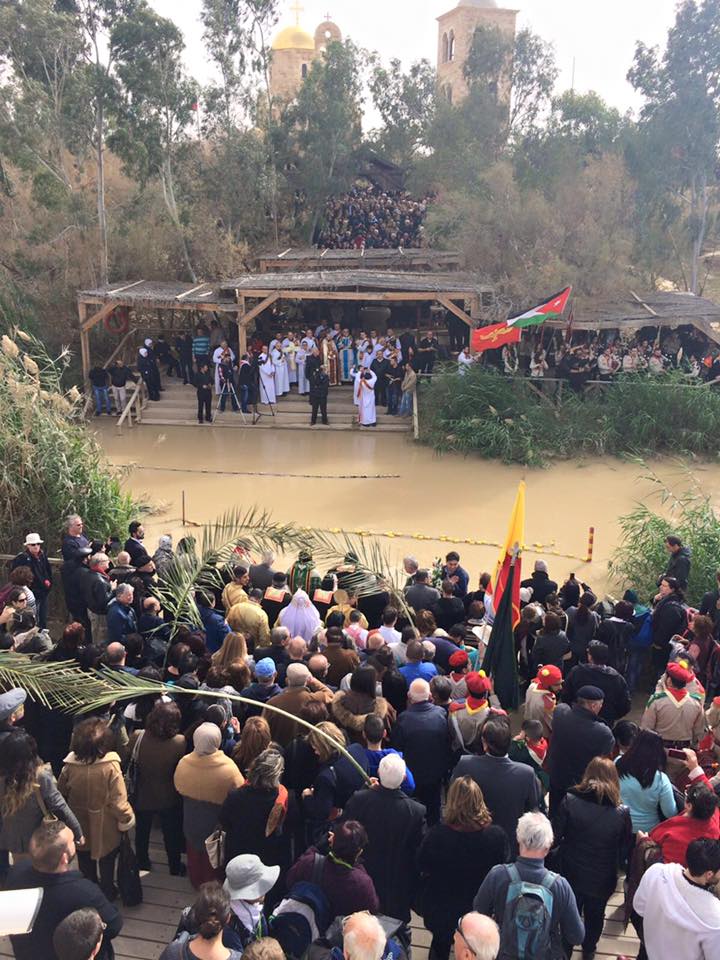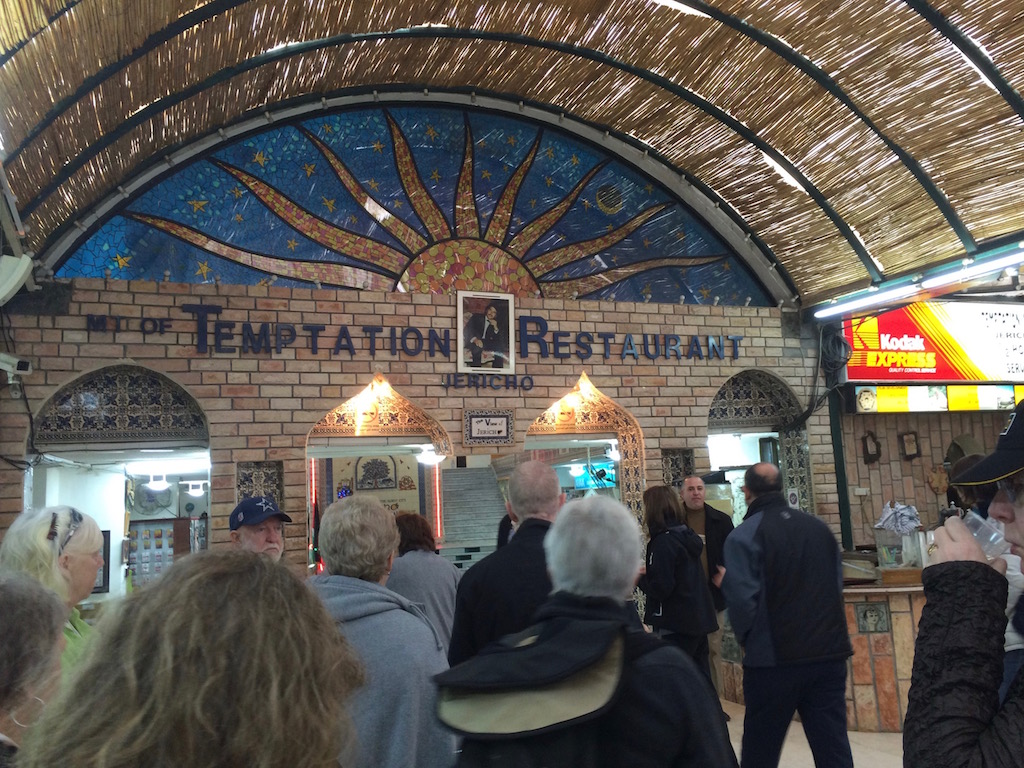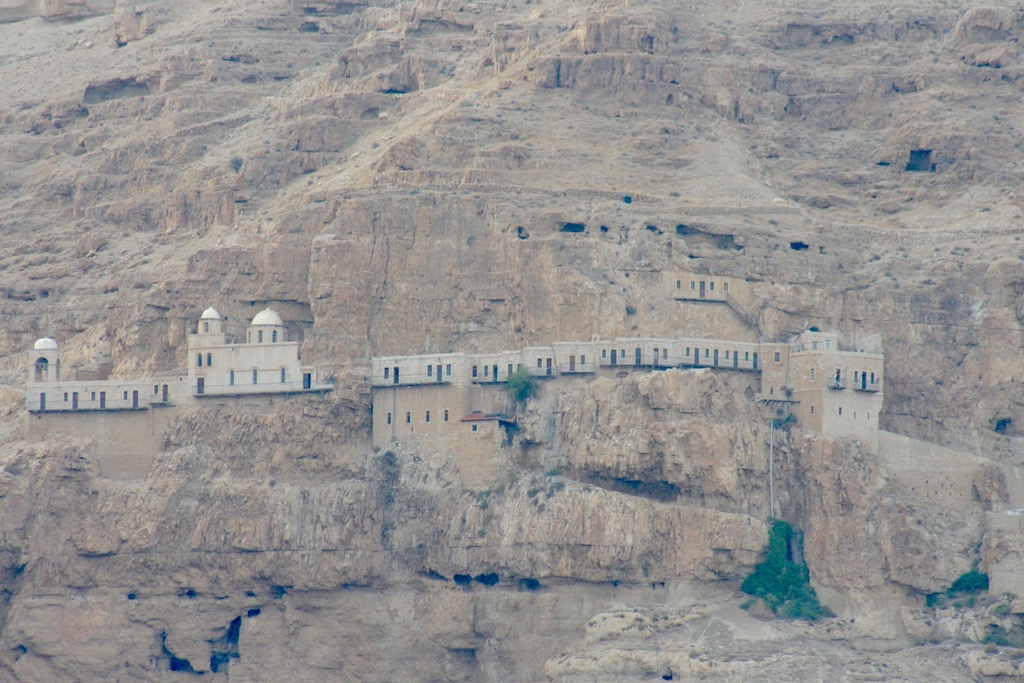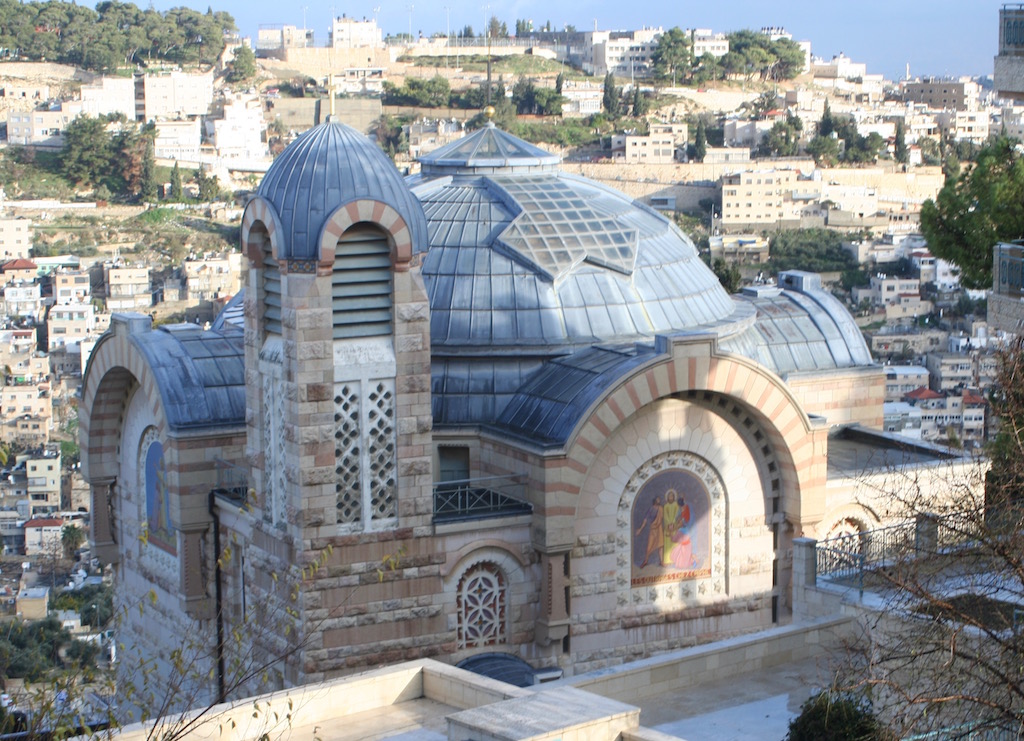Public Header: Add up to the minute announcements for your site visitors here! (Hidden from mobile visitors).
Blog
Add any number of blogs to your site. Make them viewable to any visitor, or only your members, clients, staff, or teams.
|
Mar |
When a Wall is About Tearing Down Walls |
Posted by sklein 1 Comment(s) Add a Comment ![]()
Christians often strive to tear down walls that separate people. Recently, though, I visited a church that had an elaborate wall at the front of its worship space, separating the congregation from a symbolic holier place where the priests hang out. Initially offended by this wall, I gained a new appreciation for it when I learned how it’s used every Sunday during worship services.
I took this photo inside the Church of the Annunciation that sits at one possible location in Nazareth where the angel, Gabriel, announced to Mary that she would give birth to Jesus.
Our tour guide explained that Greek Orthodox churches feature ornate walls like the one behind him to recall the curtain in the Jerusalem temple of Jesus’ time. That curtain separated everything else from the “holy of holies” where God dwelt. Every Sunday the priests re-enact a dramatic scene during Jesus’ death on the cross that’s related to that curtain.
Matthew 27:51 records that when Jesus died, the curtain in the temple tore from top to bottom. This exposed the holy of holy spaces and symbolized that in Jesus God had ended the separation of people from God. At each worship service Greek Orthodox priests go behind the wall, prepare the bread and wine of communion, and then bring them through the wall to the congregation. I found myself drawn to the symbolism of every Sunday re-enacting God’s move in Jesus to leave designated holy places and go out to the normal places where normal people live.
As Julie and I lead Access we try to break down symbolic walls that might separate people from God. We explain technical church language when we use it, invite congregation members actively to participate in what’s happening, engage multiple senses in worship, and more. We’ll not likely ever build a wall in our Access worship space, but I see and appreciate the creative way Greek Orthodox churches use their walls to proclaim the same access to God that we celebrate.
How might you help people experience the God that’s not confined to designated holy spaces? It might be as simple as inviting someone to join you at Access!
Speaking of joining you at Access, this Sunday we’ll continue our “God Questions” series of sermons with a look at a tough question Jesus asked about judging others. We’ll also encounter God’s presence with us through music, prayer, giving, and the communion meal.
See you Sunday!
Rich

Rich Rindfuss
Access Pastor
First United Methodist Church Richardson
|
Mar |
I Found Hope Between Minefields |
Posted by sklein 0 Comment(s) Add a Comment ![]()
I recently visited the Jordan River with members of our church. The river separates Israel from the country of Jordan, and the road leading to the river has minefields on both sides. Standing in the water between the minefields I found a spot of hope.

Our group visited a site on the Jordan River where John the Baptist may have baptized Jesus. Rev. April Johnson Bristow from our church and I climbed into the water and helped a few brave souls remember their baptism by submerging them in the 50 degree water. Incidentally, April is tough. She spent the whole time in the water without a wetsuit!

Baptism gives hope, reminding us of our identity as children of God, and baptism in the Jordan has particular symbolic significance. The water in the Jordan flows into the Dead Sea where nothing can live and serves as a metaphor for God’s forgiveness “washing away” our sins.

About a week after we returned from Israel, our tour guide posted a photo from where we had been that gave me another image of hope from the Jordan River. On the day of his photo Christians on both sides of the river gathered for a joint worship service. Mines lay everywhere else along the bank, but here at this spot faith in Christ brought people from both countries together for a common purpose.
Faith in Christ has the power to transcend so many differences, to bring people together in peace, and to give hope. May my faith and yours be that kind of faith.
See you Sunday!
Rich

Rev. Rich Rindfuss
Access Pastor
First United Methodist Church Richardson
|
Mar |
Surprising Memorials to Temptation and Failure |
Posted by sklein 0 Comment(s) Add a Comment ![]()
When I went to the Holy Land I expected to find many churches and monuments celebrating significant events in Biblical history. However, I didn’t expect to find a church and other buildings celebrating temptation and failure.
We all have memorials to temptation and failure. Empty boxes of candy, fast food wrappers, and beer bottles bear witness to lost battles with temptation. Old stationary, e-mails, and bills represent the once-routine presence of jobs and relationships that later failed. Most of these memorials remain around due to lack of attention rather than to a desire to keep them, so it surprised me a great deal to find elaborate structures in Israel built to memorialize temptation and failure.

Mount of Temptation Restaurant (and gift shop)
Outside of Jericho we found the “Temptation Restaurant” (and connected gift shop). At the time I thought the name was surprisingly honest; however, I later noticed that it was the “Mt. of Temptation Restaurant” (and gift shop). The Mount of Temptation lies a short distance away and contains ruins of a Crusader-era memorial to the temptation of Jesus.

Crusader memorial to the temptation of Jesus
The Church of St. Peter in Gallicantu sits in Jerusalem. Gallicantu means “cock crow” in Latin, and the church memorializes the place where Jesus’ disciple, Peter, denied knowing Jesus as a cock crowed in the background. Under the church lies a bare-rock holding cell where Jesus likely spent the pre-dawn hours alone, his disciples having abandoned him.

The Church of St. Peter in Gallicantu
I left those structures with two ideas for how grand (and simple) memorials to temptation and failure might strengthen my faith. First, I can use them to remind me of my need for God and God’s forgiveness. Second, I can use them to remind me of God’s faithfulness in the face of my failures. Just as Jesus offered forgiveness to Peter, he offers it to you and me.
For we do not have a high priest who is unable to sympathize with our weaknesses, but we have one who in every respect has been tested as we are, yet without sin. Let us therefore approach the throne of grace with boldness, so that we may receive mercy and find grace to help in time of need. Hebrews 4:14-16
Join me Sunday at Access for the final worship service in our Focus series. We’ll learn and practice a 4-part model for prayer that helps us find words to speak to God, and we’ll even make reverent use of M&Ms
